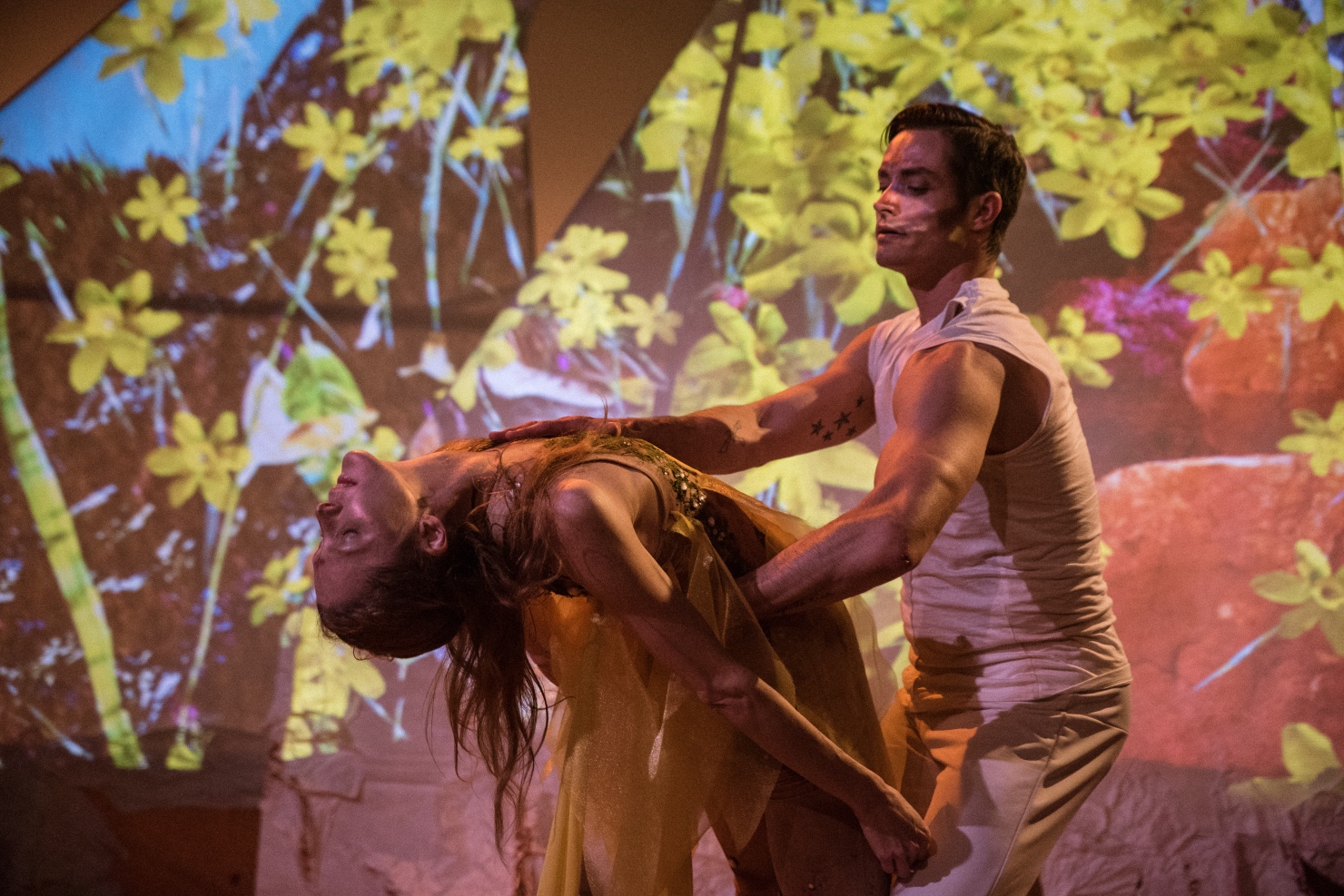
A Pandora's Box of artistic collaboration
ReviewJust like the Raptors’ incredible teamwork that earned them a spot in the NBA Finals, FAWN Chamber Creative’s new opera-ballet, titled Pandora (seen May 24), is centred around collaboration. Instead of one composer, three joined forces to write the music. The audience also had a hand in the creative process, voting Kit Soden, David Storen, and Joseph Glaser three years ago as the selected composers. Pandora embodies FAWN’s quest to merge different artistic disciplines with dance, singing, chamber ensemble, technology, and visual arts all working together.
With fog and electric blue lighting added to the mix, there was a feeling of expectancy as though something was about to happen.
Arriving at what felt like a large furnished garage at 360 Geary Ave, I really was not sure what I was getting myself into. The entrance was cloaked with thick black curtains that reached ceiling-to-floor and a makeshift ticket booth was set up on one side. As I passed on to the “auditorium”, I was greeted with atmospheric music that made one feel like they had arrived at some sort of haunted house. The eerie music seemed to cycle through from being an unsettling background effect to a very prominent presence of electronic noise and intelligible whispers. With fog and electric blue lighting added to the mix, there was a feeling of expectancy as though something was about to happen.

Teiya Kasahara’s performance stood out from the other singers as she showcased masterful command and a powerful high range.
The performance began without any real announcement - the background music morphing into the forefront, lights dimming, and the projected Pandora’s box that had been orbiting endlessly dissipating from view. The entire production had a rather hypnotic effect with a front row of audience goers sitting cross-legged on mats, the lighting (Oz Weaver) circulating through numerous effects, and the accompanying ensemble shifting in and out of focus as the libretto by David James Brock both puzzled and engaged the audience.
As the painter, a lover, and a woman at a grave, Teiya Kasahara’s performance stood out from the other singers as she showcased masterful command and a powerful high range. She brought depth and a penetrating quality to her singing, while maintaining a refined tone. Jonathan MacArthur offered a captivating presence, yet his vibrato was sometimes too much - over dominating the pitches and detracting from his expression. Aaron Paul Durand, as an officer and a man dying, seemed uncomfortable throughout Act I with shifting eyes darting across the stage and into the audience numerous times.

Dancer Jennifer Nichols, a painting, a lover, and a young woman, matched Kasahara in terms of excellence in execution; the two performers were really what brought the entire performance together. Nichols’ movements were supple and fluid, her gaze piercing, and her choreography sometimes bird-like with graceful flapping arms and a foot swiping along the floor and then lifting upwards repeatedly - creating a hypnotic rhythm along the floor.
Glaser’s score called upon electric guitar and a hair-raising cello part as well as extended piano techniques that sounded like metal nails scratching against the wire strings.
Kudos to Amanda Smith (stage direction) for achieving a memorable collaboration between Nichols and Kasahara in Act I. The dancer-singer duet was quite sensuous: Nichols poised like a figurine in a music box, arms overhead and the backs of her hands touching, standing behind a transparent mountain while, standing on the audience side, Kasahara gilded her paintbrush along the outline of Nichols’ shadow.

Act III, Daffodil, brought an appropriate flavour of springtime into the production with projections of sunny daffodils, and a dainty sequined one-piece costume for Nichols (Tosca Delfino, Costume Design). Yet all was not flowers and sunshine - Glaser’s score called upon electric guitar and a hair-raising cello part as well as extended piano techniques that sounded like metal nails scratching against the wire strings. A dying man dressed in a bubble wrap hospital gown gasping for breath (Durand) and a distressed woman at a grave (Kasahara) join Nichols and her pas-de-deux partner, Tyler Gledhill, on stage.
Where traditional, large productions see primarily white haired audience members, FAWN appears to be succeeding in garnering a diverse audience.
Storen, Glaser, and Soden’s teamwork resulted in a score that really is like a Pandora’s box. It is a complex kaleidoscope of sound worlds with flavours of new-age, atonal, and modernist experimental styles. What perhaps may have allowed the whole work even greater satisfaction for the audience would have been a recurring motif threaded throughout or a release into a tonal, melodic sphere for even just a moment or two.

FAWN notes their objective of expanding the audience for Canadian classical music. Where traditional, large productions see primarily white haired audience members, FAWN appears to be succeeding in garnering a diverse audience. Looking around me as I left the “furnished garage” venue, the average audience age seemed to be young adults of the edgy, artistic, new-age kind (think short square bob hair styles and ripped jeans). While the organization still seems to be in the growing stages, with sets and costumes feeling a bit like a work-in-progress, the creative ideas are there with much potential for future growth and success.


Comments